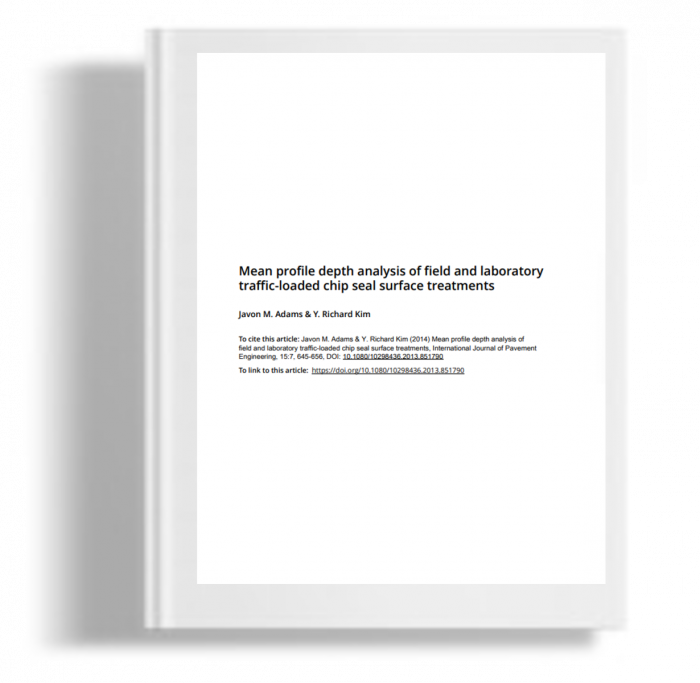Kami menggunakan cookies untuk membuat pengalaman Anda lebih baik. Untuk mematuhi petunjuk e-Pribadi yang baru, kami perlu meminta persetujuan Anda untuk menyetel cookies. Pelajari lebih lanjut .
Mean profile depth analysis of field and laboratory trffic loaded chip seal surface treatments
This paper presents a laboratory and field study to evaluate the mean profile depth (MPD) parameter that represents the surface texture of chip seal pavements. A three-dimensional laser profiler is used to determine the MPD values from both field pavement sections and field samples that have been tested in the laboratory using the third-scale model mobile loading simulator (MMLS3). Data obtained from five different field-constructed chip seal sections are used to evaluate the effects of different factors on the MPD of chip seal pavements. These factors include aggregate type, emulsion application rate, field versus MMLS3 traffic loading and traffic volume.
This paper presents a laboratory and field study to evaluate the mean profile depth (MPD) parameter that represents the surface texture of chip seal pavements. A three-dimensional laser profiler is used to determine the MPD values from both field pavement sections and field samples that have been tested in the laboratory using the third-scale model mobile loading simulator (MMLS3). Data obtained from five different field-constructed chip seal sections are used to evaluate the effects of different factors on the MPD of chip seal pavements. These factors include aggregate type, emulsion application rate, field versus MMLS3 traffic loading and traffic volume. The results presented in this paper suggest that: (1) chip seal pavements constructed using lightweight aggregate have larger initial MPD values and faster reduction in MPD as a function of the number of wheel passes than those constructed using granite 78M aggregate, (2) MPD values obtained from a drier section (with drier indicating a lower emulsion-to-aggregate ratio than that of the sections it is being compared against) initially drop quickly and significantly, resulting in a much smaller ultimate MPD value, (3) in general, the MPD values obtained under MMLS3 loading are similar to those obtained from field traffic loading, thus allowing the translation of the laboratory MMLS3 data to the field response data, (4) a short rest period in a high-traffic volume road retards the recovery of the binder and, therefore, leads to more permanent changes in the MPD and (5) the initial measured MPD value can help predict aggregate loss performance.

